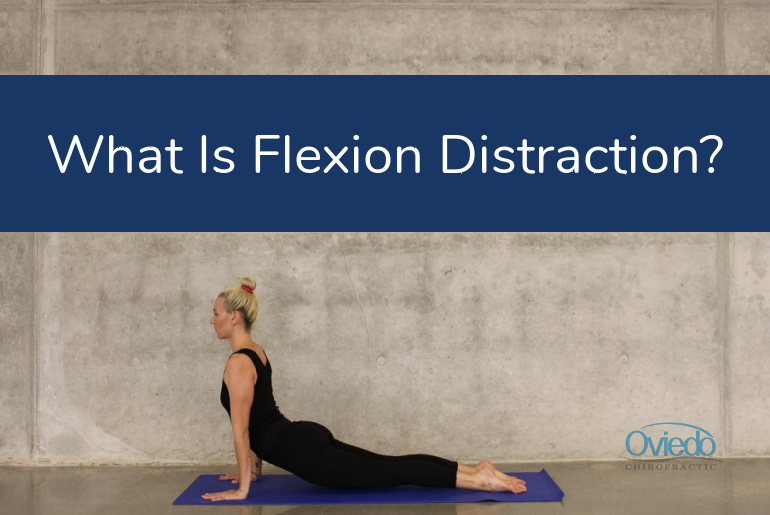What Is Flexion Distraction Therapy?
March 10, 2021

Don’t get used to lower back pain!
Find out how flexion distraction therapy can help. Lower back pain is extremely common here in America. Other than upper respiratory infections, back pain is the most common reason for visiting a doctor. But just because pain, numbness, tingling, or other symptoms have become a part of your daily life, doesn’t mean things should stay that way. And your friendly neighborhood chiropractor can help. At Oviedo Chiropractic, one of the (many) methods we use to relieve pain is a technique called flexion distraction. In this article, we’ll discuss what this technique is, who it can benefit, and why you’ll want to give it a try as soon as possible.Injured?
We Offer Same-Day Appointments
Inside Your Discs
Before we go into what flexion distraction is, it might help to take a closer look at what this form of therapy treats: namely, your spinal discs. Your spine consists of a stack of vertebrae separated from each other by spongy discs. These discs provide cushion and lubrication so your joints can move freely and without pain. Without spinal discs, your bones would rub against each other, causing extreme pain and stiffness (as anyone with arthritis can tell you). While this spongy, flexible material is the perfect choice for cushioning hardworking joints, it also comes with a drawback. Throughout the day, gravity pulls down on your body, squeezing and compressing your discs. If you’re dehydrated, the effect is even worse.
While this spongy, flexible material is the perfect choice for cushioning hardworking joints, it also comes with a drawback. Throughout the day, gravity pulls down on your body, squeezing and compressing your discs. If you’re dehydrated, the effect is even worse.
What is Flexion Distraction?
Flexion distraction therapy aims to reverse spinal disc compression by gently stretching your spine. A special table (sometimes called a Hill table) provides the movement necessary to stretch your spine. You lie face down on this table and your chiropractor secures your ankles using a comfortable strap. Next, the table will move the lower half of your body up and down in a slow, rhythmic motion. As your feet lower to the floor, your chiropractor may also provide gentle pressure to your spine to enhance the effect.
This movement gently stretches your spine, pulling the vertebrae further apart. Since your discs are flexible and spongy, they are decompressed and restored to their natural state. This is similar to how you would clean a sponge in your sink. (In fact, make sure you drink plenty of water after your appointment, as this is when your discs are most able to absorb hydration.)
As your feet lower to the floor, your chiropractor may also provide gentle pressure to your spine to enhance the effect.
This movement gently stretches your spine, pulling the vertebrae further apart. Since your discs are flexible and spongy, they are decompressed and restored to their natural state. This is similar to how you would clean a sponge in your sink. (In fact, make sure you drink plenty of water after your appointment, as this is when your discs are most able to absorb hydration.)
Benefits of Flexion Distraction
The most immediate and significant benefit of flexion distraction is reduced pressure on your spinal discs. Intradiscal pressure can be caused by a number of factors, but one of the biggest culprits is too much sitting. Sitting for long periods of time can wreak havoc on your body and is a major contributor to compressed discs. Flexion distraction therapy not only gives your joints the maximum amount of cushion and support, it relieves pressure on the nerves running to and from the spine as well. Referred pain—which occurs when a nerve within the spine is compressed and sends a pain signal to another area of the body—is well treated with this therapy. Other benefits of flexion distraction include:
Other benefits of flexion distraction include:
- Improved range of motion;
- Treatment for herniated or prolapsed discs;
- Reduction in stiffness, pain, headaches, and numbness; and
- Improved posture.

